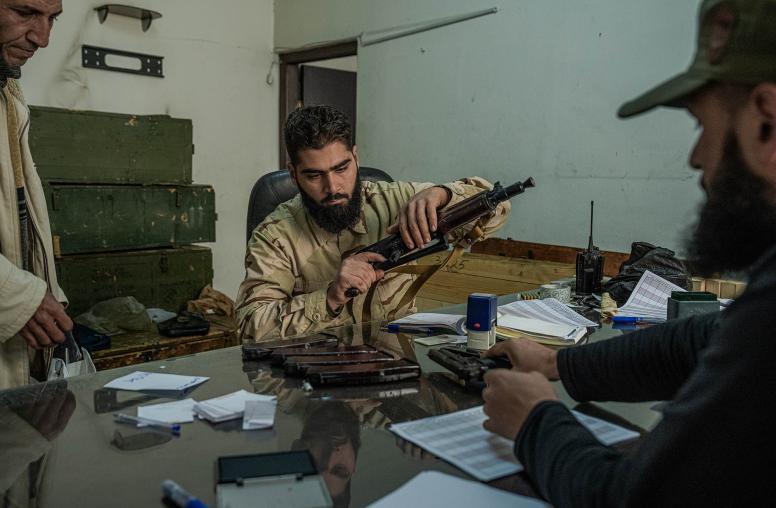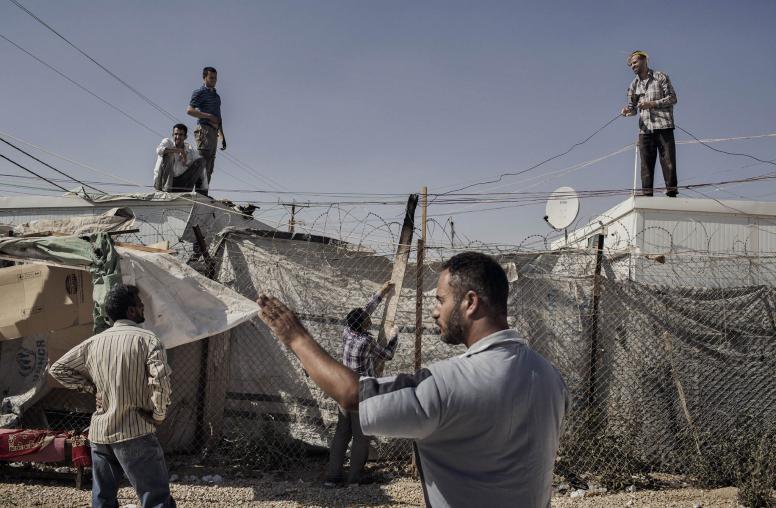Q&A: After Airstrikes, What’s Next for the U.S. in Syria?
Mona Yacoubian on the Missile Strikes Against Syria and the Assad Regime’s Calculus Moving Forward
On Friday evening, the United States, together with Britain and France, launched a joint military operation in response to the Syrian regime’s April 7 chemical weapons attack on Douma. The Douma attack left more than 40 civilians dead and several hundred experiencing symptoms of exposure to toxic chemicals. The coordinated airstrikes hit three targets associated with Syria’s chemical weapons infrastructure: a scientific research center, a chemical weapons production facility, and a chemical weapons storage area. Around this time last year in April 2017, the Trump administration launched a unilateral cruise missile strike on the Shayrat airfield following a sarin attack by the Syrian regime on the town of Khan Shaykhoun, which killed more than 90 civilians. U.S. Institute of Peace Senior Advisor for Syria Mona Yacoubian provides some insight into the airstrikes and the challenges that lie ahead.

What was the intended goal behind Friday’s coordinated strikes?
Friday’s precision missile strikes were focused on deterring the Assad regime from undertaking further chemical weapons attacks, rather than a more ambitious goal of regime change in Syria or shifting the trajectory of the Syrian civil war. In announcing the joint operation, President Trump focused on the Assad regime’s repeated use of chemical weapons against civilians, noting both the attack on Khan Shaykhoun one year ago and the attack on Douma last week. He underscored that the April 13 strikes are intended to “establish a strong deterrent against the production, spread and use of chemical weapons.” Similarly, Pentagon officials emphasized the targeting of Syria’s chemical weapons infrastructure in order to significantly degrade Syria’s chemical weapons capabilities.
Will the strikes be successful in deterring the future chemical weapons attacks by the Assad regime?
To date, one-off missile strikes, such as those launched on April 13, have not been successful in deterring the Assad regime from using chemical weapons. As noted, following the strike last April, the regime continued to undertake chemical weapons attacks against civilians. While the April 13 strikes hit more targets and were focused on Syria’s chemical weapons infrastructure, Syria likely retains a chemical weapons capability, even if somewhat degraded.
A more complicated question, is whether Assad can be deterred from using these chemical weapons. Given the regime’s existential stakes in the conflict, it has demonstrated its willingness to stop at nothing—including the use of chemical weapons against civilians—to stay in power. Shifting the regime’s calculus on the use of chemical weapons will require the regime to believe its survival is more threatened by the consequences of using these prohibited weapons. Yet, sufficiently shaking the regime to alter its calculus raises the specter of spiraling escalation and a conflict that quickly spins out of control. Bottom line: Finding the right balance of force that is sufficient to deter the regime from future chemical weapons use while still limited enough not to spark uncontrolled escalation is extraordinarily difficult.
What are the challenges that lie ahead?
The greatest challenge going forward will be whether the United States is able to resist being drawn deeper into Syria’s complex and overlapping conflicts. Neither Russia nor Iran appears interested in taking the United States on directly, however both Moscow and Tehran could seek to exact a price from the U.S. through indirect, asymmetric actions. In addition, President Trump and other administration officials have underscored the United States’ willingness to sustain a military response should the Syrian regime continue to use chemical weapons. In an emergency meeting of the United Nations Security Council, U.S. Ambassador to the United Nations Nikki Haley said the United States is “locked and loaded” to respond militarily if Assad uses chemical weapons again. While deterrence likely will hold in the short term, Assad could test the United States’ resolve over the longer term as he continues to consolidate his hold on power.


